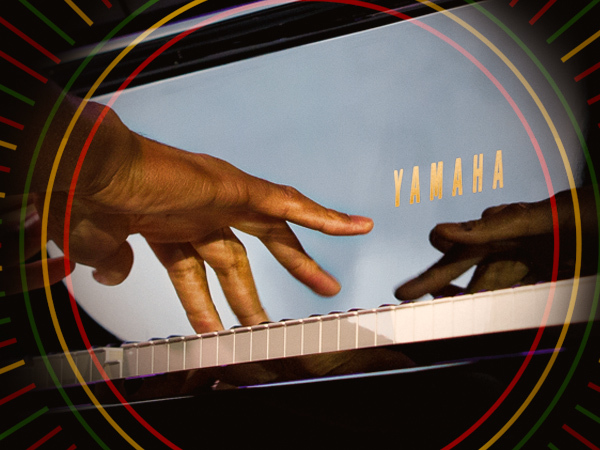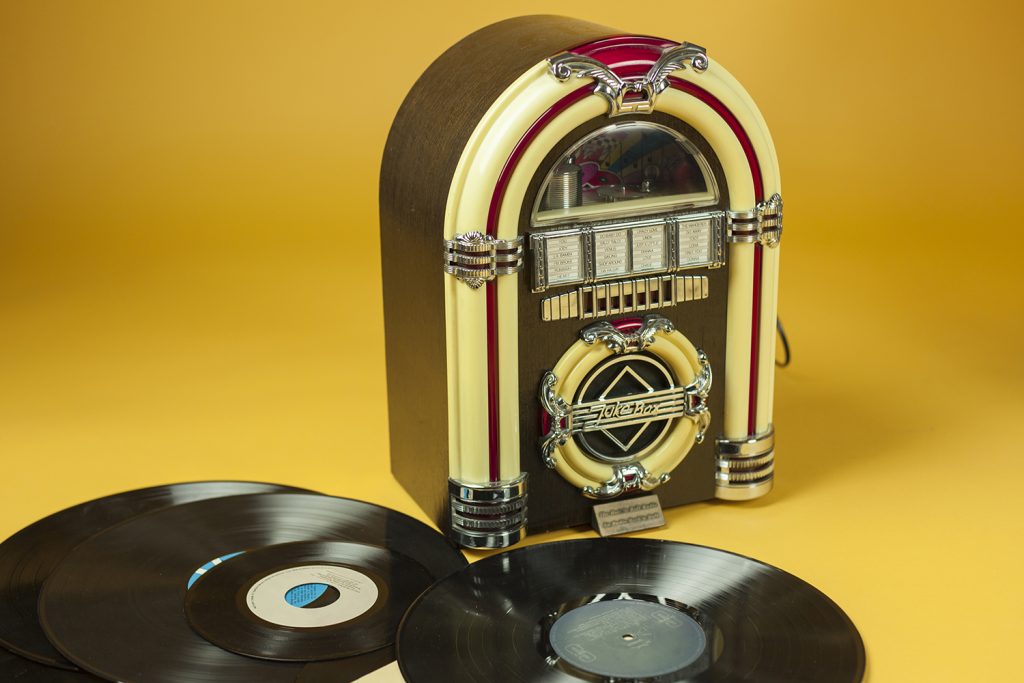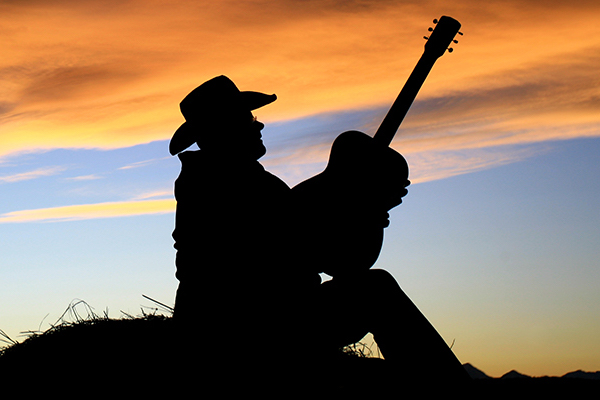Tagged Under:
Musical Instruments Across Asia and the Pacific Islands
Celebrate AAPI heritage by learning about these instruments.
Music plays an intrinsic role in Asian and Pacific Islander culture. In fact, some of the oldest musical instruments in the world come from the region: Chinese Jiahu gǔdí flutes, for example, or Vietnamese lithophones (rocks that are struck to produce musical notes). Music is also an important part of connecting Asian Americans and Pacific Islanders to their history and background.
In celebration of Asian American Pacific Islander Heritage Month, here’s a list of some instruments that help showcase the range of musical practices and traditions of the AAPI community.
Stringed Instruments
Guzheng/Zheng
The guzheng (sometimes called a “zheng”) is a 21-string plucked zither with adjustable bridges that originated in China in roughly 200 B.C.. It has a large, resonant soundboard and is tuned to a major pentatonic scale. Guzheng players often wear fingerpicks on one or both hands. Historically, the guzheng has been seen as an instrument of the people used for entertainment and pleasure, but today it has an extensive repertoire as a solo instrument and has been integrated into the Chinese orchestra. The guzheng is related to the Mongolian yatag, Vietnamese dan tranh, Korean ajaeng and Japanese koto (see below).
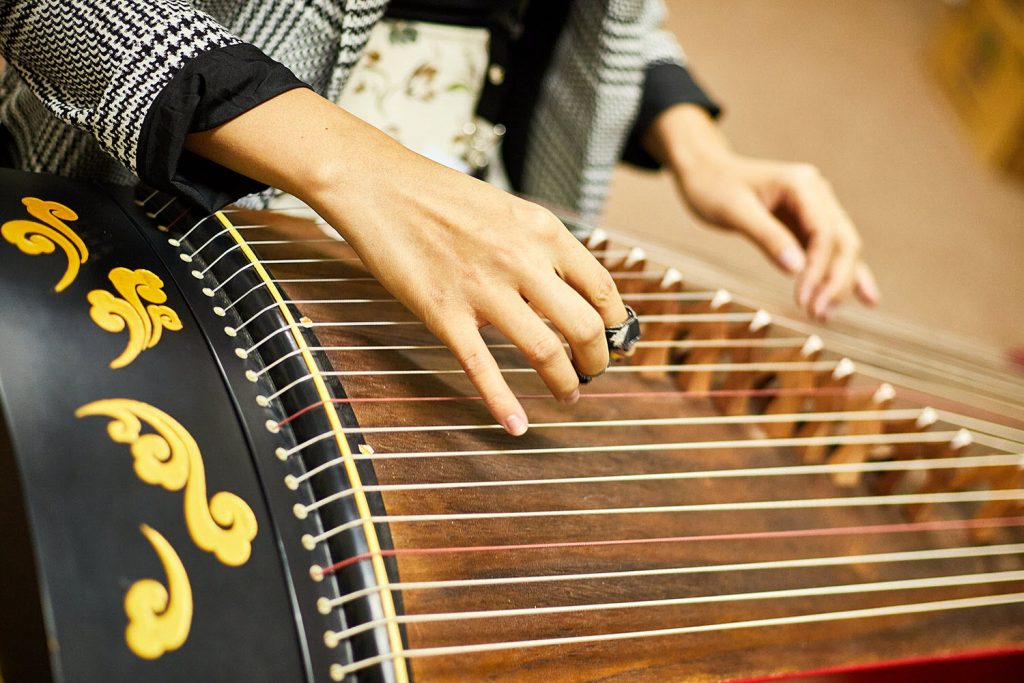
Here’s a video of sisters (and premier players) Yuan Li and Yuan Sha performing the classic guzheng song “Spring on Xiang River.” For an introduction to the instrument, check out this video.
Koto
The koto is a plucked zither with movable bridges derived from the Chinese guzheng. It most usually has 13 strings, but 17-string koto are also common. Koto strings are generally plucked using three fingerpicks worn on the first three fingers of the right hand. Although the koto has been a part of the gagaku court orchestra since the 8th century, perhaps the most important influence on its development was Yatsuhashi Kengyo (1614–1685), known as the “Father of Modern Koto.” He was a gifted blind musician who changed the tuning of the instrument and greatly expanded the repertoire of koto songs. During the Japanese American incarceration during World War II, the koto, among other Japanese musical instruments, was taught and performed as one way of resisting assimilation. In the United States, the koto is a way for Japanese Americans to maintain connections to their heritage.
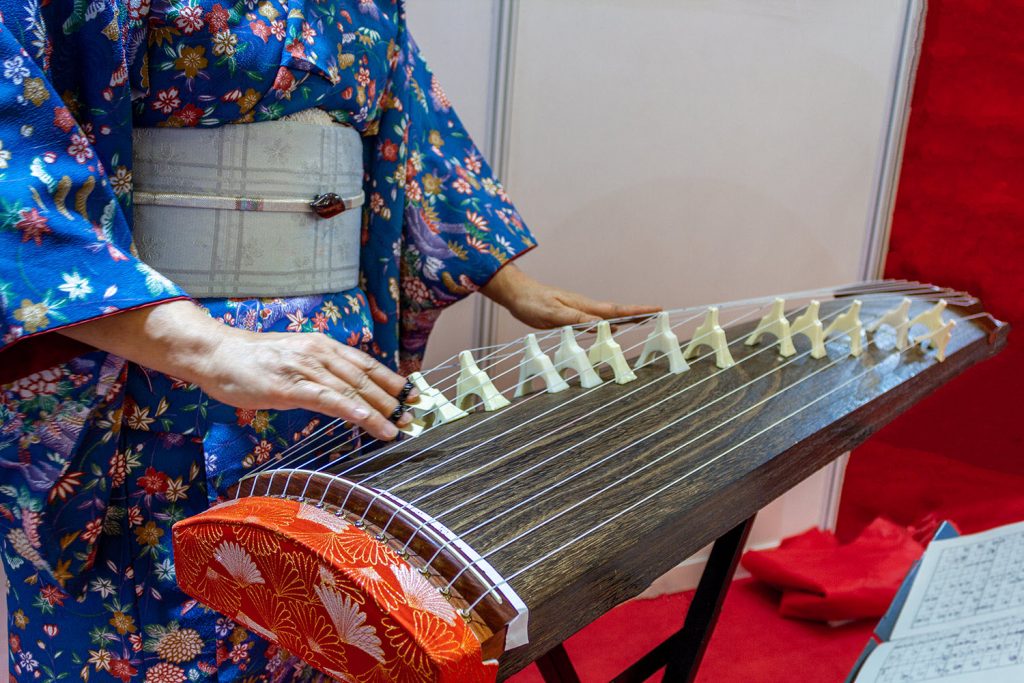
Looking for an online lesson? Watch this video, or click here to experience Kasumi Watanabe’s moving performance of the popular koto song “Sakura.”
Pipa
This four-stringed, pear-shaped lute has origins along the Silk Road in Persia and India, and found popularity in China. Over time, the pipa transitioned from its place in the courts to become associated with women and the middle class in China, and has been featured in several contemporary Western compositions such as Ghost Opera (1994) by Chinese-American composer Tan Dun, who won an Oscar for his score to the movie Crouching Tiger Hidden Dragon.
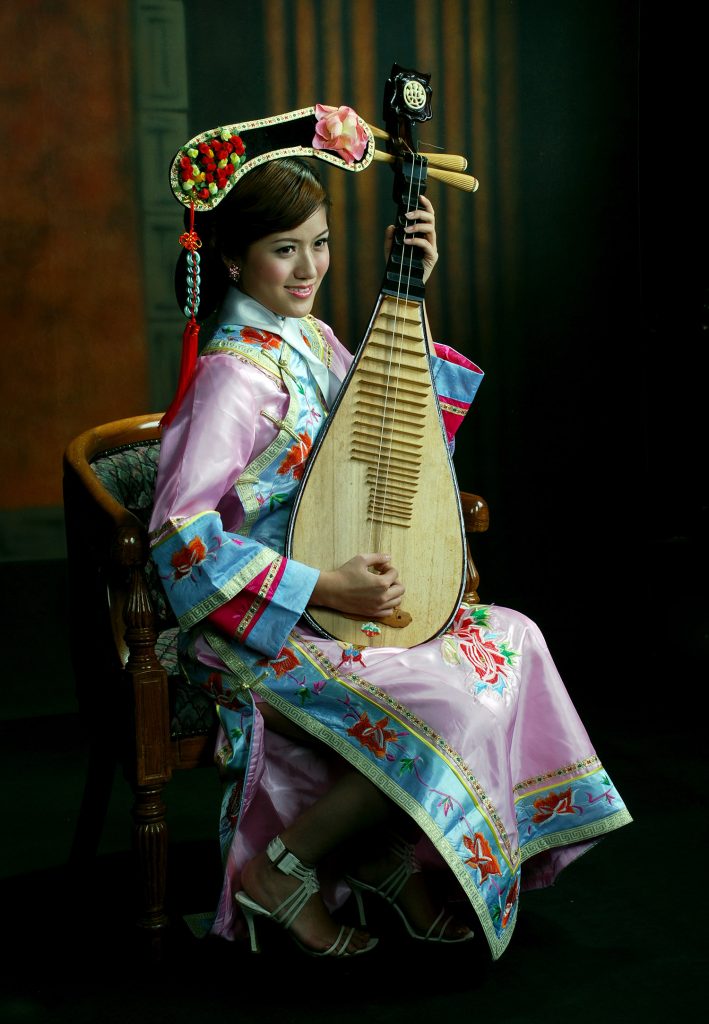
Check out this video for more information about the instrument, and be sure to watch this video of virtuoso Jiaju Shen performing the difficult pipa composition “Ambush From All Sides,” written over two thousand years ago!
Erhu
The erhu is a two-stringed spike fiddle introduced to the Han Chinese around the 11th century, with roots in the northwest and southwest regions of China as well as Persia. Historically, the erhu was a folk instrument, but in recent years it has become adopted by many of the Chinese elite. The erhu is fretless and does not have a fingerboard. It’s played with a bow that is held in-between the strings, and tension in the bow hair must be carefully adjusted by the musician.
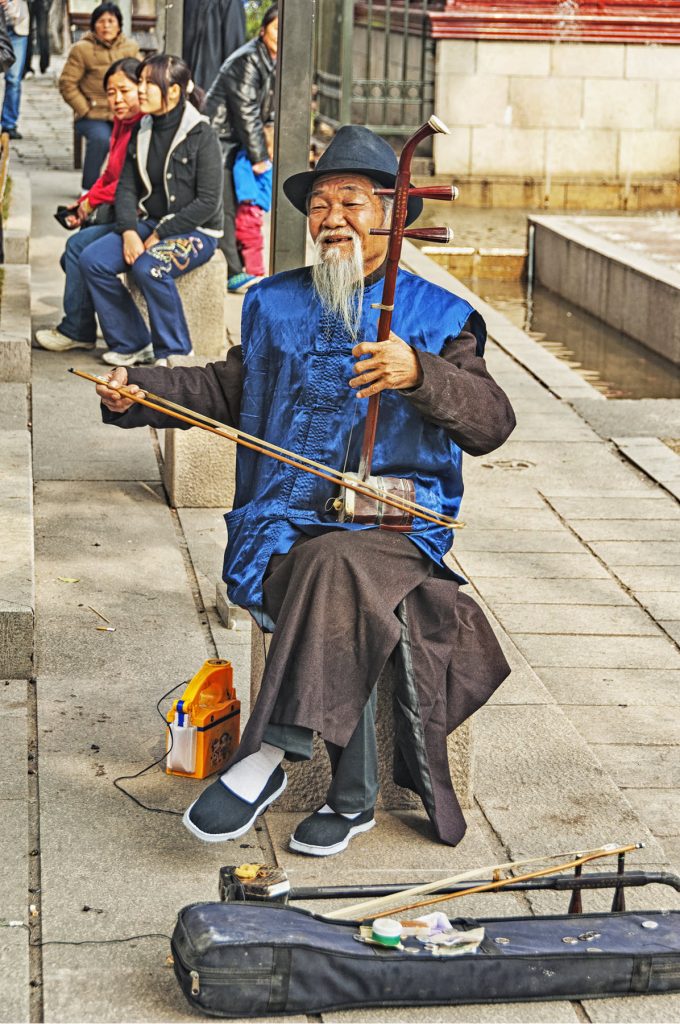
Check out this video introduction to the erhu, or click here to watch erhu player Wenqing Zhao perform the popular song “Autumn Moon Over the Han Palace.”
Saung
This arched harp has 13 silk strings that are plucked by the musician. Its origins can be traced back to the southeastern coast of India as early as 500 A.D., but today the saung is considered the national musical instrument of Burma/Myanmar. It plays a big role in the refined style of Burmese classical music that accompanies vocalists singing the music of the royal courts (Thachin Gyi, meaning great songs). It also accompanies anyeint, a female solo dance form.
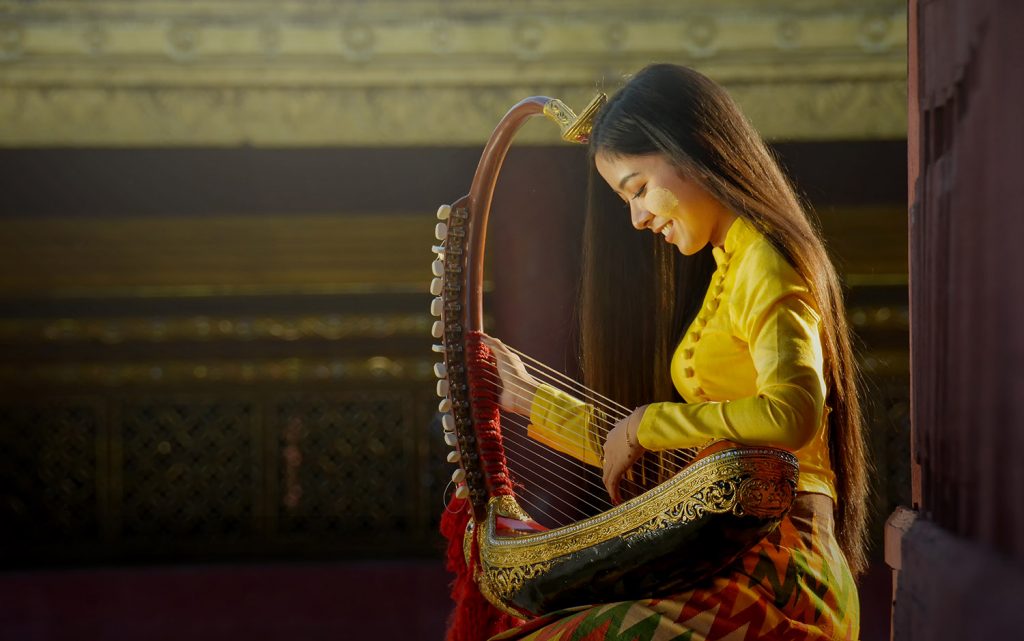
Check out this saung solo, or click here to watch Burmese saung player Nei Wah give a Nobel Peace Prize Lecture Musical Performance of the composition “Loving Kindness and the Golden Harp.”
Ukulele
The ukulele, once known as the taro-patch fiddle, is a small guitar instrument introduced by Portuguese emigrants who traveled across Brazil and the Caribbean over to Hawai‘i in the late 1800s. It typically has four strings, but there are six- and eight-string models as well. The ukulele differs from European guitars not just in size but in its construction too, in that it’s traditionally made from Hawai‘ian wood. By the start of the twentieth century, the ukulele had become the most recognizable Indigenous Hawai‘ian instrument, integrated into Hawai‘ian reggae and other Pacific Island musical genres. Today, largely thanks to social media, it’s playing a major role in popular culture the world over.
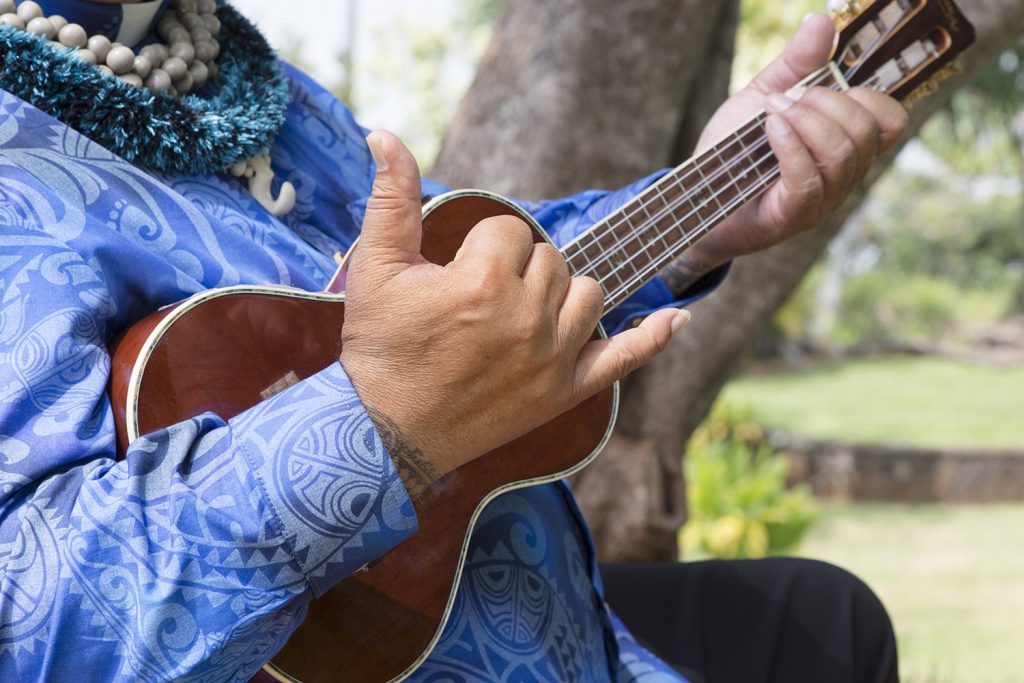
Click here to learn more about the history of the uke, or check out this cool video of ukulele ace Jake Shimabukuro performing in a variety of musical genres at the 2016 NAMM show.
Kse Diev
The kse diev is a monochord zither with a gourd that rests on the player’s chest. The performer plucks the single string while dampening the string at specific points to sound harmonics. It is used as a part of Cambodian wedding music and ritual ceremonies. Though one of the oldest instruments in the country (with stone inscriptions found at Angkor Wat), it remains a source of Cambodian pride.
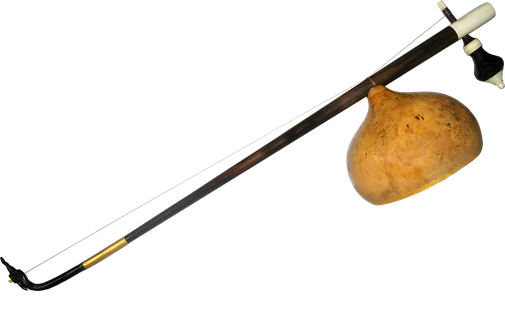
Click here for more information about the kse diev, or click here to watch a video about Sok Duch, the last surviving Cambodian Master of the instrument.
Wind Instruments
Daegeum
The daegeum is a large transverse flute with a vibrating membrane used in Korean court music as a part of the samhyon samjuk “three strings, three winds” ensemble. The legend of the daegeum is that King Shimun’s father returned to the mortal world as a dragon. The dragon told the King to cut a special bamboo plant located on a mountain in the Eastern Sea. This special piece of bamboo became the daegeum flute, which was used by the King to prevent calamities. Following cultural revival movements in the 1960s, playing the daegeum has become a marker for Korean cultural identity.
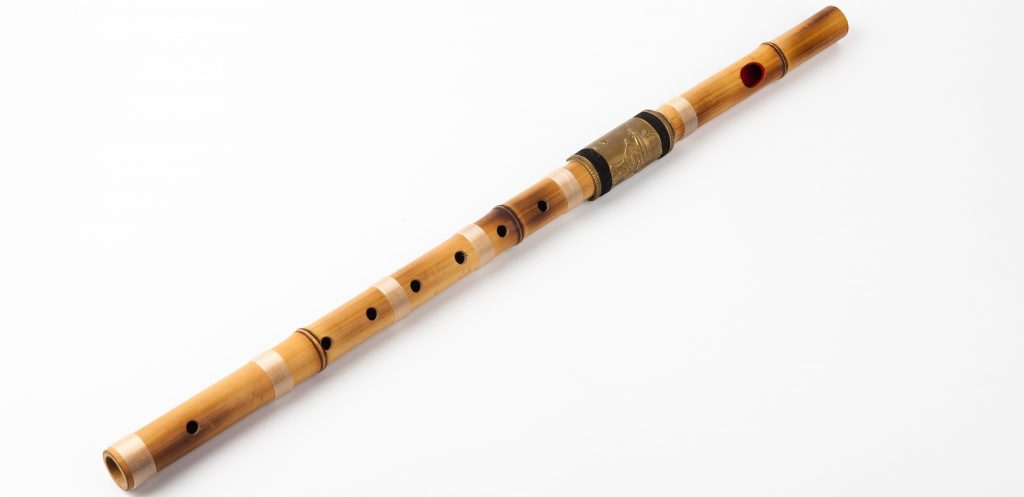
Click here to watch how a daegeum is constructed, or check out this performance of traditional Korean music played on the instrument.
Qeej
The Hmong are Indigenous people who are spread across southwest China, Vietnam, Laos, Thailand and Myanmar. The qeej (pronounced “kheng”) is a free-reed mouth organ that is said by the Hmong to communicate with the spirit world and is therefore used (as a solo instrument) to perform the funeral repertoire, deeply associated with Hmong poetry and the seven tones of the Hmong language. Rather than making music, players learn to make the qeej speak with the dead and teach the dead how to enter the realm of the sacred. Because of its connection with funerals and death, the qeej had long been treated with suspicion for inviting death into the home. However, as traditions change, studying the qeej has become an assertion of Hmong identity and pride.
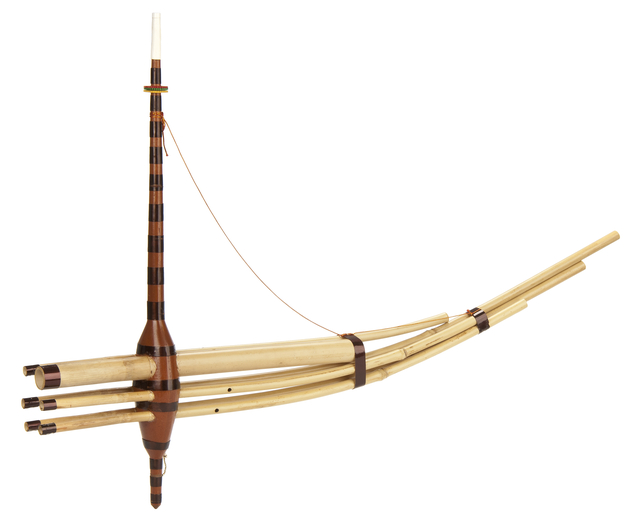
Curious to know how a qeej is made? Check out this video, and be sure to watch as musician Chai Lee performs and explains the significance of the instrument.
Percussion Instruments
Taiko
Taiko — a Japanese word that literally translates to “drums” — has its roots in Shinto and Japanese Buddhist ritual practices dating back as far as the sixth century. In common usage, it usually refers to kumi-daiko (taiko ensemble), a practice that was invented in 1951 and continues to expand in both Japan and the U.S., with the popular taiko group Kodō coming into international prominence in recent years. Taiko drums were important for maintaining Japanese American identity during the 1960s, and they remain a strong component of the Asian American political movement as a voice of empowerment for Asian Americans. There are several professional and community taiko organizations across the United States such as the Los Angeles Taiko Institute. Taiko drums are struck with a pair of wooden sticks called bachi. Performers maintain various positions and recite onomatopoetic sounds while playing taiko.

Click here to learn more about the history and evolution of taiko drumming, and be sure to check out these performances by the East LA Taiko and Taiko Center of LA.
Tabla
Tabla are a pair of pitched drums from South Asia that are struck with the palms and fingers. It is used as an accompanying instrument in a wide range of genres, including Hindustani classical music, Sufi devotional music and Bollywood. There are six different styles or lineages of tabla playing: Delhi, Lucknow, Ajrara, Punjab, Farukhabad, and Banaras. Tabla music was popularized, in part, through the pop music fusion introduced by musicians such as Ustad Allarakha Khan Qureshi (popularly known as Alla Rakha) and his son Ustad Zakir Hussain.
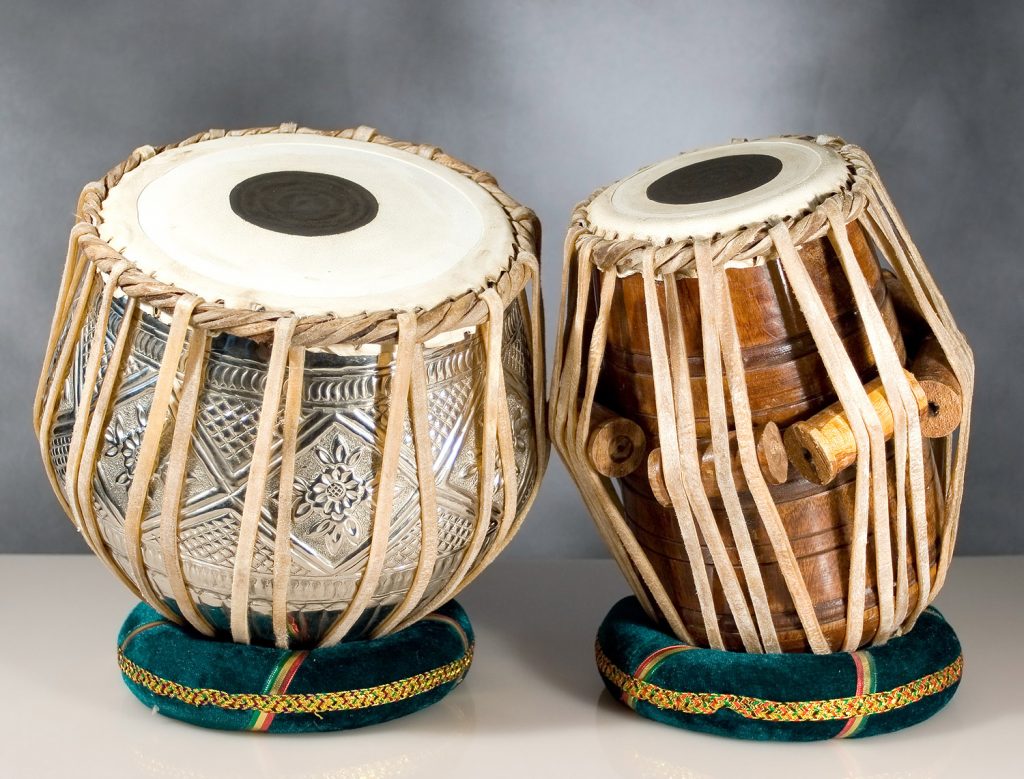
Learn the basics of playing tabla in this video, and don’t miss this dynamic (and nearly hour-long!) virtuosic tabla solo performed by Ustad Zakir Hussain.
Gamelan
In the Indonesian language, the word “gamelan” roughly translates to “orchestra,” and just like a Western orchestra, it should not be thought of in terms of its individual instruments (which in the case of gamelan are a collection of mainly percussion instruments, some played by hand, others played by mallets or hammers). Gamelan is an ensemble tradition and therefore people rarely play gamelan alone. Instead, it is a group activity carried out by the community in ritual, ceremonial, celebratory, commercial and competitive events. Gamelan music is also used to accompany dance and theatrical performances. In the United States, Gamelan brings people together to enjoy music making as well as to celebrate the richness of Indonesian culture. There are many community and collegiate ensembles open to musicians and non-musicians alike to participate and learn about gamelan. In December 2021, Gamelan was recognized by UNESCO as an Intangible Cultural Heritage of Indonesia.

Want to learn about the various instruments of the Javanese Gamelan? Click here. Also be sure to check out this video of the Chicago Balinese Gamelan giving a 2021 performance.
Kulintang
This instrument is part of the gong-chime ensembles of the Southern Philippines that accompany weddings and healing rituals, as well as dance and theatrical performances. Kulintang consist of a series of eight or more horizontally suspended gongs that are struck with mallets. They can be traced back before the arrival of Islam during the 14th century and survived Spanish and American colonization. In the United States, kulintang remains valuable for building community and maintaining the cultural heritage in the Filipino diaspora.
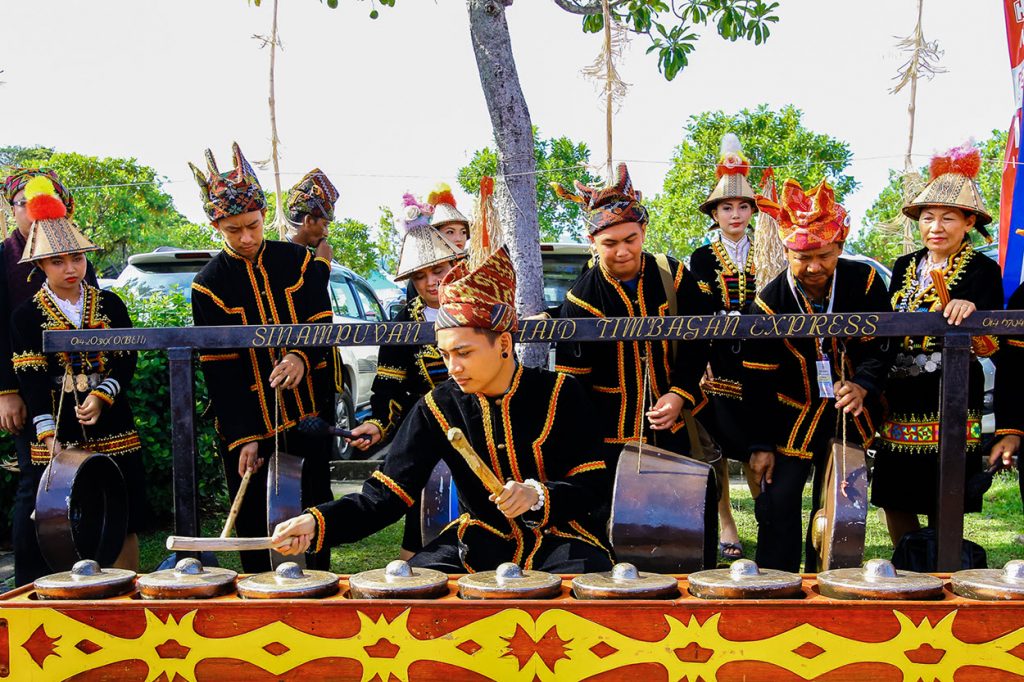
Click here to learn how to play kulintang, or watch this performance given by the Palabuniyan Kulintang Ensemble.











